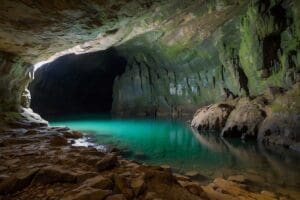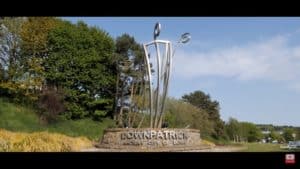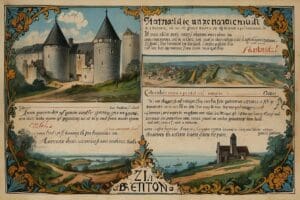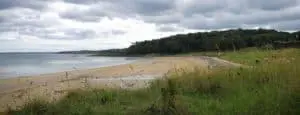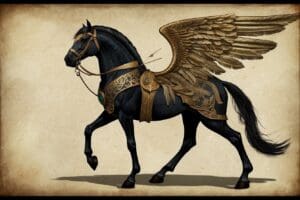Green Myths: Unveiling the Influence of Irish Folklore on Environmental Conservation
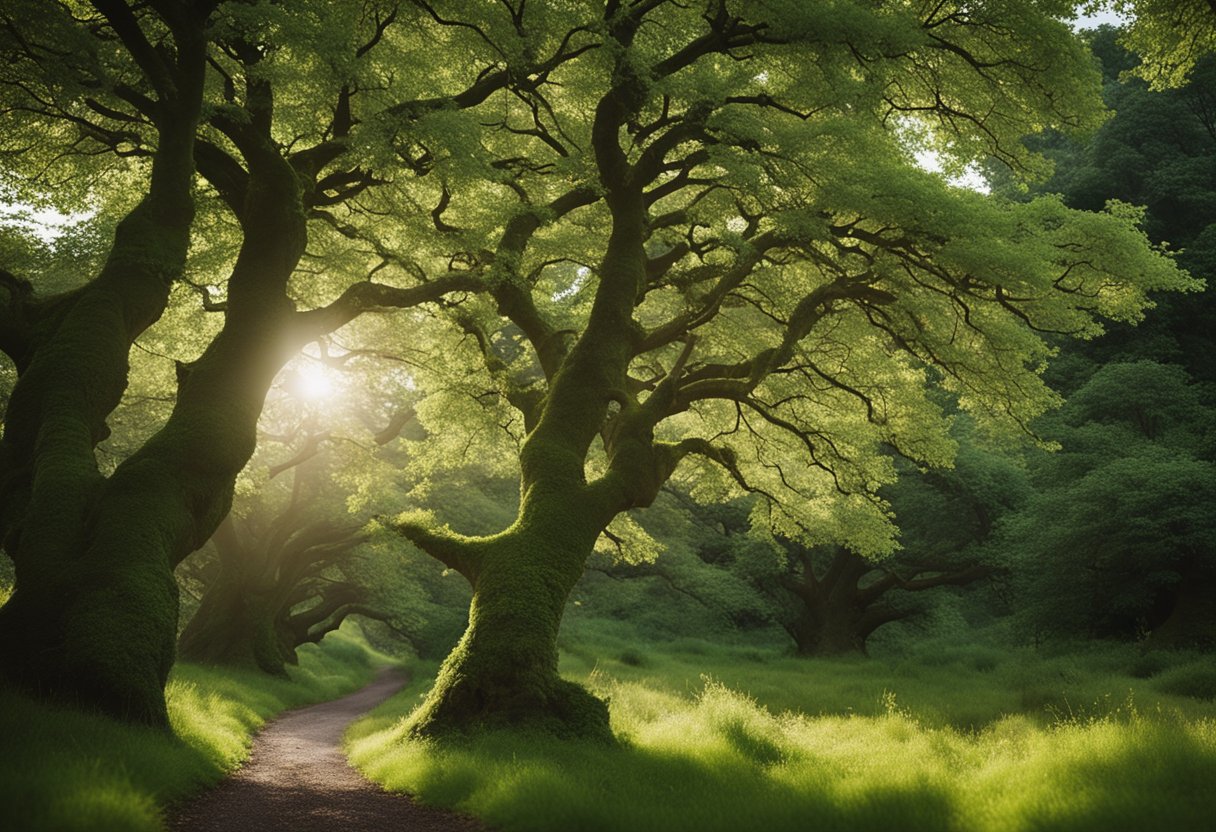
Updated On: April 24, 2024 by Maha Yassin
Irish folklore, a blend of history and nature’s beauty, weaves tales of mystical creatures and enchanted landscapes, reflecting a deep respect for the environment. These narratives offer insights into environmental conservation, showcasing the potential of cultural heritage to inspire modern efforts.
The reverence for nature evident in Irish mythology can spark a profound personal and collective commitment to preserving the very landscapes that inspired the legends of yore. From the sacred significance of trees in Celtic tradition to the wise stewardship seen in Brehon laws, folklore can help inform and motivate modern conservation strategies. By examining how legends and traditional beliefs encourage us to protect our natural surroundings, we can uncover innovative ways to integrate these age-old values into current green practices, ensuring the sustainability of treasured landscapes for future generations.
The Roots of Irish Folklore

Irish folklore is a tapestry woven from an intricate blend of myths and the natural world, where ancient narratives and sacred trees play pivotal roles.
Ancient Irish Myths
We find the essence of Irish mythology in its ancient tales, which are ripe with adventure, moral lessons, and the supernatural. These stories have been passed down through generations, preserving a culture imbued with mystical beings and epic sagas. Central to Irish myths are the Tuatha Dé Danann, a mythical race that represents pre-Christian Ireland’s pantheon. They left behind a legacy of powerful artefacts and a wisdom that still resonates.
Sacred Trees and Ogham Alphabet
Trees hold a revered space in Irish heritage, serving as a symbolic connection between the physical and spiritual worlds. The oak tree, embodying strength, wisdom, and durability, stands out in this lore. Our ancestors saw such trees as sacred and created an entire alphabet around them. The Ogham alphabet, with characters named after trees, illustrates the profound bond between language and the natural world. Our history reflects a deep respect for these arboreal entities, acknowledging their guiding presence in our myths and everyday lives.
Environmental Conservation Through Legends

Through the rich tapestry of Irish folklore, we find myriad ways in which legends provide a framework for environmental conservation. These stories, deeply rooted in the land, teach us about the intrinsic value of our natural world and the importance of preserving it for future generations.
Folk Tales and Ecology
Among Irish folk tales, there’s a recognition of the intertwined relationship between human beings and the environment. Our ancestors learned about ecology and the world through stories that personified nature, teaching respect and care for the land. For instance, stories of mystical creatures who would punish those who harmed the forests were not only cautionary tales but instilled a sense of duty to protect our natural surroundings.
Brehon Laws and Environmental Protection
The Brehon Laws, a set of ancient Irish legal statutes, offer fascinating insights into early Irish approaches to environmental protection. They detailed regulations on managing trees and waterways, showcasing an understanding of sustainability and conservation centuries before these concepts became mainstream. By assigning legal rights to the natural elements, the Brehon Laws symbolised a society where the environment was a crucial concern and safeguarding it was embedded in the rule of law.
Cultural Heritage and Landscape Preservation
In Ireland, our approach to environmental conservation is deeply intertwined with the value we place on our cultural heritage and landscapes. From heritage trees to the rolling green hills, every aspect contributes to our national identity and the wisdom we’ve garnered over centuries.
Heritage Trees and Cultural Significance
Our heritage trees are living monuments of lore and legend, marking sacred sites and boundaries or standing as silent witnesses to historical events. These trees hold a special place in Irish culture and maintain ecological stability, offering habitats for diverse fauna. For instance, the reverence for trees in Irish folklore reflects their enduring role in our heritage and underscores their necessity in cultural preservation efforts.
Landscapes and Irish Identity
Ireland’s landscapes are a tapestry of history and mythology, shaping our collective consciousness. Their preservation is essential for maintaining biodiversity and safeguarding the stories and traditions that define us. Our rolling green hills and rugged coastlines are features of our national identity and have inspired a commitment to ecological change rooted in the wisdom of past generations and a vision for our future.
Wildlife Protection and Irish Folk Beliefs
Irish folklore is teeming with tales that weave the natural world, particularly animals, into the fabric of its mythology. These stories often depict a harmonious relationship between humans and nature and inspire current efforts in wildlife protection.
Faerie Lore and Animal Habitats
We acknowledge that faeries, central to Irish mythology, are considered guardians of wildlife. In the tradition of the Cailleach, lore suggests that faeries prevent the over-exploitation of animal habitats. Texts reveal that they are said to live close to forests, bogs, and other natural landscapes where the veil between worlds is thin. Such narratives have reinforced the importance of preserving these habitats as they are vital for our natural world and steeped in our cultural identity.
Fostering Kinship with Nature
Embracing kinship with nature is a nuanced ethos present in Irish folk beliefs. For us, every tree, rock, and stream is infused with a spirit, fostering a bond that extends to the animals dwelling within. By nurturing this deep-rooted sense of connection inherited from ancestors, we promote compassionate environmental stewardship and a sense of responsibility that transcends generations. This deep kinship with the natural world impels us to protect it ardently, ensuring that the wild realms synonymous with faerie lore endure.
Influences of Folklore on Modern Sustainability
Irish folklore is more than just tales and legends; it catalyses innovation in sustainable living today. By tapping into the age-old wisdom encapsulated in myths, we find guiding principles for modern sustainability efforts.
From Mythology to Sustainable Practices
Mythology often carries with it the echoes of a time when living in harmony with nature was commonplace. Through our research and exploration, we’ve unearthed how these narratives are being revived to promote sustainable practices. For instance, narratives surrounding the Celtic reverence for nature have inspired a resurgence in biodegradable materials, encouraging us to create products that return to the earth and cause no harm. The principles of taking only what’s needed, often found in ancient Irish stories, are similarly reflected in recyclable initiatives that help minimise waste.
Green Innovation Inspired by Folk Wisdom
Folk wisdom is not stagnant; it evolves and finds new expressions in green innovation. Acknowledging the forethought of our ancestors, we’ve observed a rise in the use of renewable energy sources, an idea that resonates with the ancient respect for nature’s endless cycles. This respect has inspired us to seek materials and technologies that do not deplete our planet’s resources. Leveraging this timeless wisdom has enabled the creation of modern solutions, such as recyclable packaging and biodegradable consumer goods, which are both innovative and rooted in sustainability.
By bridging the gap between old lore and new practices, we’re championing a future where the environment is respected, as taught by our mythological past.
Conservation Efforts in Irish Forests
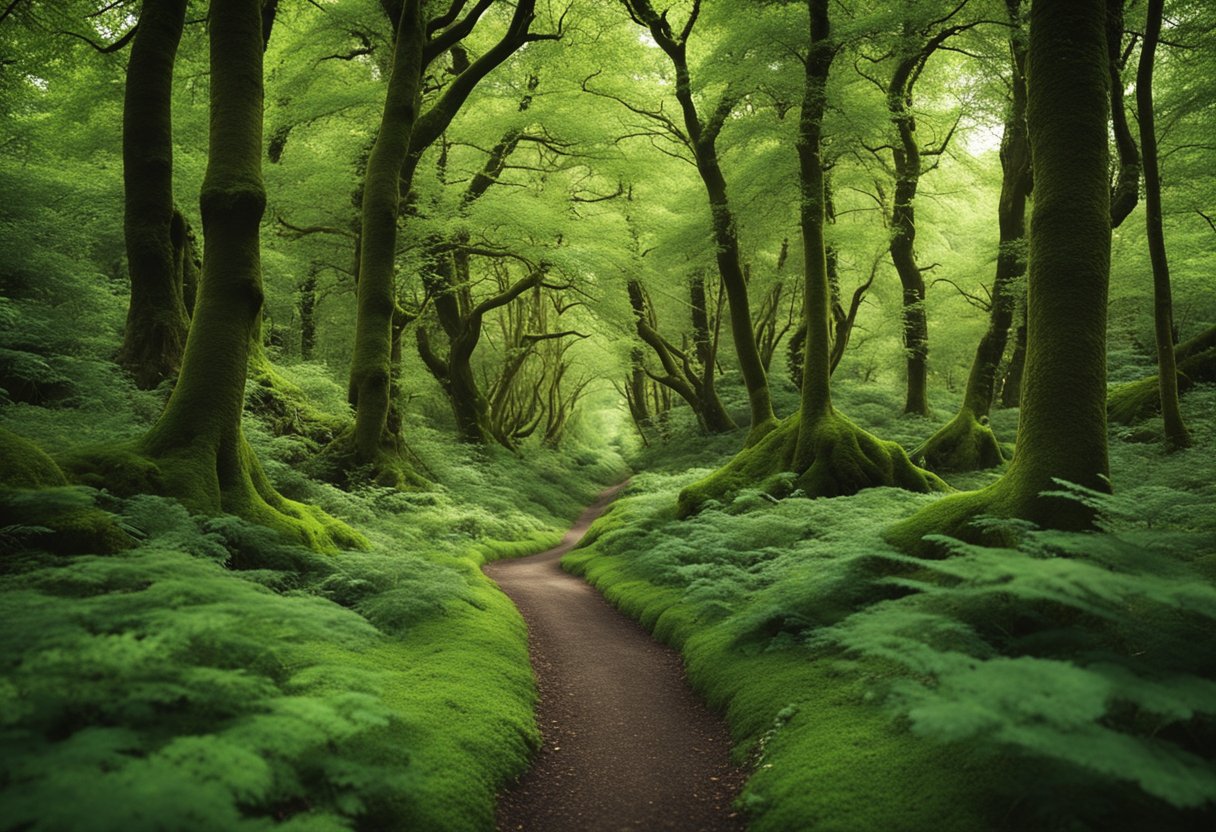
In this section, we’ll delve into how mythology shapes the management of Ireland’s woodlands and the strategies used to safeguard these vital ecosystems.
Forest Management and Mythology
Ireland’s forests are crucial for the environment and steeped in rich mythology that continues to influence contemporary forest management practices. Initiatives to maintain and protect these woodlands often draw on the profound cultural significance of trees in Irish folklore, acknowledging them as symbols of life and knowledge. Programmes intertwine conservation efforts with the mythology to engender a sense of stewardship and reverence for these habitats.
Protecting the Green Lungs of the Planet
Our forests act as the planet’s green lungs, and protecting them is vital in combating climate change. Through various conservation strategies, we ensure that the trees within these forests continue to thrive, providing oxygen, sequestering carbon, and preserving biodiversity. Such strategies include restoring native woodland, implementing sustainable harvesting practices, and engaging local communities in conservation efforts. These actions contribute significantly to maintaining the health of our planet.
Eco-Tourism and Revival of Folk Traditions
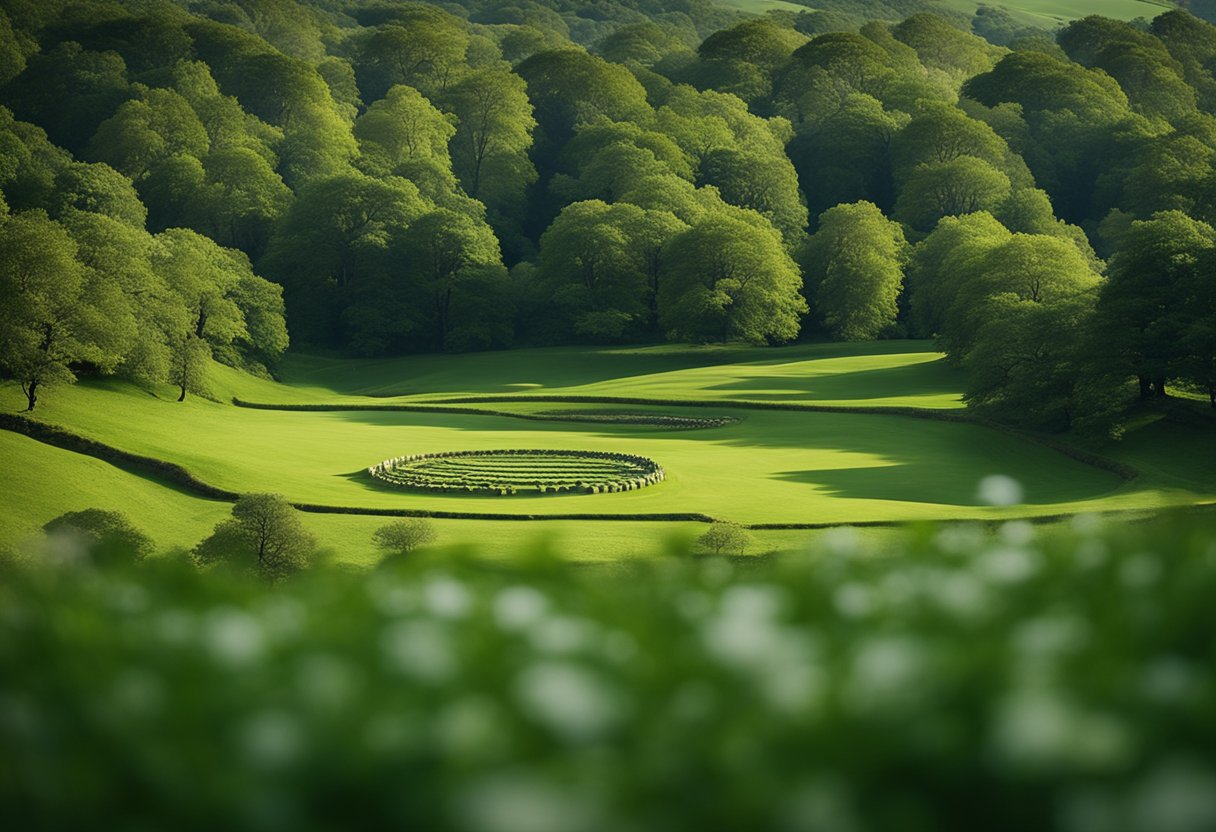
Eco-tourism has become a significant force in revitalising Irish folklore and mythology, preserving natural sites and integrating cultural experiences into environmental stewardship.
Tourism and Preservation of Natural Sites
Tourism, particularly eco-tourism, is pivotal in preserving Ireland’s natural sites, many steeped in folklore. The allure of landscapes rich in Irish mythology draws visitors keen to experience these places first-hand. The Cliffs of Moher, for instance, are not just a natural spectacle; they are also the legendary home of the wise hag, Cailleach.
By choosing to visit such sites through eco-tourism initiatives, tourists contribute directly to their maintenance and protection. Moreover, these sites serve as outdoor classrooms where the tales of An Tuatha Dé Danann, the supernatural race in Irish lore, can enliven the natural surroundings, making conservation efforts resonate on a personal level.
Cultural Experiences and Environmental Stewardship
The intersection of cultural experiences with environmental stewardship found in eco-tourism provides an enriching platform for the revival of folk traditions. Engaging with the local folklore entertains and imparts lessons on living harmoniously with the environment.
One profound way this comes to life is through festivals such as Samhain, where modern celebrations are laced with ancient practices reflecting respect for nature’s cycles. These cultural experiences highlight the conservation message inherent in many traditional stories and demonstrate how development can harmoniously coexist with our heritage. Through sharing these stories and festivities, we instil a sense of shared responsibility for our environment, fostering a culture of care and respect for the land.
Tackling Contemporary Environmental Challenges
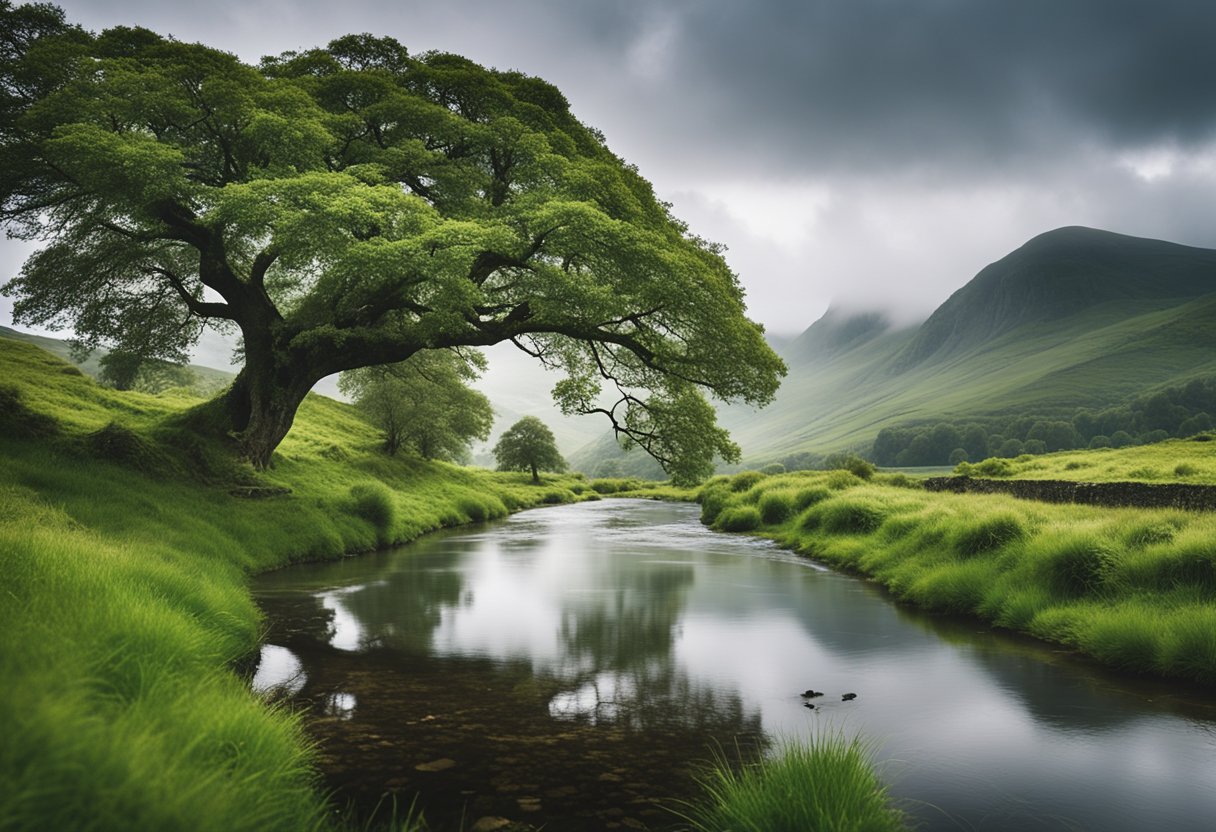
In our exploration of the influence of Irish folklore on ecological conservation, we anchor our discussion on two critical challenges of our times: climate change and waste management.
Climate Change and Folk Narrative
Climate change is an integral issue of the current environmental crisis, triggering a global reassessment of cultural narratives. Irish mythology’s deep reverence for nature provides a unique perspective on this phenomenon. Tales of the natural world imbued with animism and respect demonstrate ways folklore can be a vehicle for promoting environmental stewardship. For instance, stories of ancient rainforests in Wales have inspired today’s conservation efforts, where the entwined history of myth and place underpins a culture of protection.
Waste Management: Lessons from the Past
Our forebears held wisdom in minimising waste and valuing resources pertinent to today’s landfill challenges. Practical insights can be drawn from past practices in managing resources and reducing reliance on materials like plastic. Waste management lessons from folklore underscore the importance of a circulatory approach, reminiscent of age-old customs where nothing was wasted and everything had a use. This ethos effectively confronts the modern issue of methane emission from waste, emphasising the need to adapt such long-standing green principles into current strategies.
By fusing the time-honoured lessons encapsulated within myths and folklore with contemporary environmental policies, we equip ourselves with robust, culture-rich strategies to counteract environmental challenges such as climate change and waste proliferation. Our engagement with these tales is more than a revival of interest; it’s an insightful tool for ecological preservation.
Green Technologies and Closed-Loop Systems
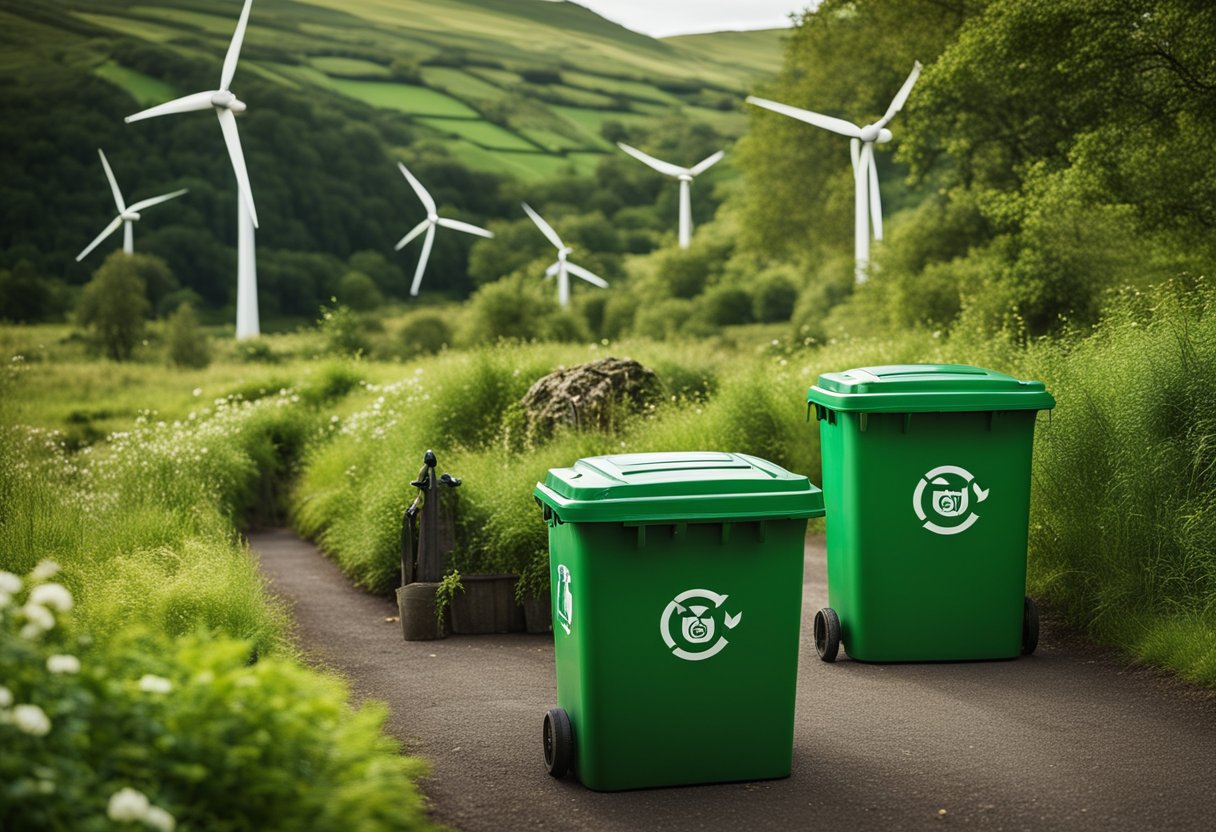
We’re observing a surge in green technologies and a commitment to closed-loop systems. These innovations are crucial in reducing environmental impact and promoting sustainability.
Sustainability in Action
By integrating sustainability into daily practice, green technologies transform how we live and work. Examples include solar panels, which harness the sun’s power and reduce reliance on fossil fuels. Advances in wind turbines have similarly turned the simple blow of the wind into a robust energy source. Both technologies operate on the principle of producing energy with minimal environmental consequences.
Recycling is a key component of these systems, turning waste into new materials and drastically cutting down the need to extract and process raw materials. Recycling is a step towards a lighter environmental weight and a practical form of disposability that aligns with ecological values.
The Role of Ethical Waste Disposal
Ethical waste disposal is another cornerstone, emphasising the responsible handling of residual materials to avoid harmful environmental impacts. Practices like composting organic waste serve as a stellar example of disposal that feeds back into the growth cycle rather than adding to landfills. In a closed-loop system, even waste is looped back into the production cycle, dramatically lessening the burden on the planet.
Waste that cannot be composted or repurposed is often converted into energy in innovative waste-to-energy facilities. These facilities underline the practicality and necessity of sustainable disposability and closed-loop thinking by treating waste as a resource.
Our pursuit of sustainability has to embody these principles if we envisage a future where technology and ethics coalesce to create a world that is resilient and replete with resources for generations to come.
Addressing the Rebound Effect
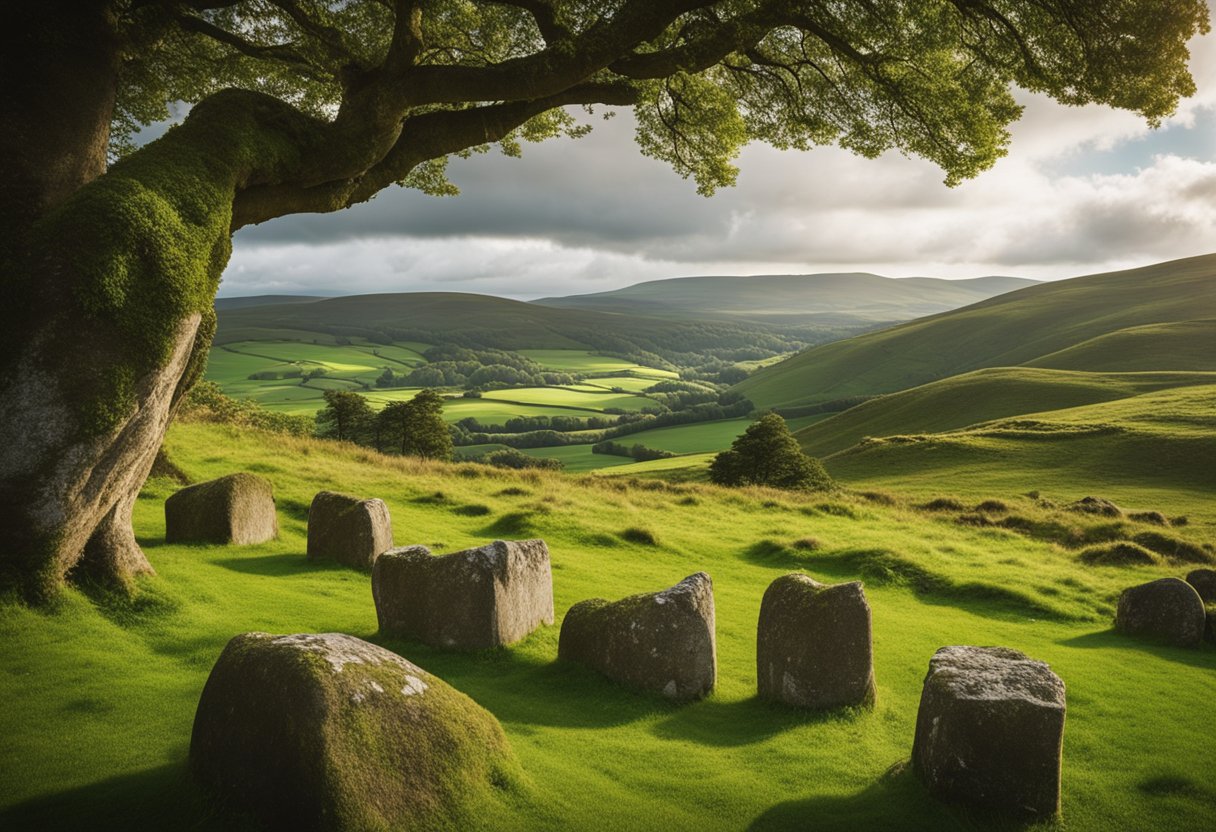
When we consider the concept of recycling, it’s often viewed as a straightforward solution to waste and environmental degradation. However, the rebound effect illustrates that the impact of recycling isn’t always as positive as we might assume.
The rebound effect refers to a situation where the environmental benefits of recycling are offset by increased consumption. For instance, if we believe we’re doing our part by recycling, we might feel justified in using more resources, negating the environmental impact improvements we sought to achieve.
To address the rebound effect, we must:
- Educate: Increase awareness that recycling is not a carte blanche for increased consumption.
- Reduce: Emphasise the need to reduce resource usage alongside recycling.
- Monitor consumption: Keep track of our resource use to avoid complacency.
| Action | Purpose |
|---|---|
| Educate | Clarify misconceptions about recycling benefits |
| Reduce | Prioritise resource reduction over recycling |
| Monitor | Prevent an increase in consumption |
Furthermore, recognising the rebound effect drives us to advocate for holistic approaches to sustainability that incorporate the ethos of “Reduce, Reuse, Recycle” in that precise order. Our combined efforts to stay informed, make conscientious choices about the resources we use, and encourage broader systemic changes are crucial in mitigating the rebound effect and achieving genuine environmental conservation.
Summary
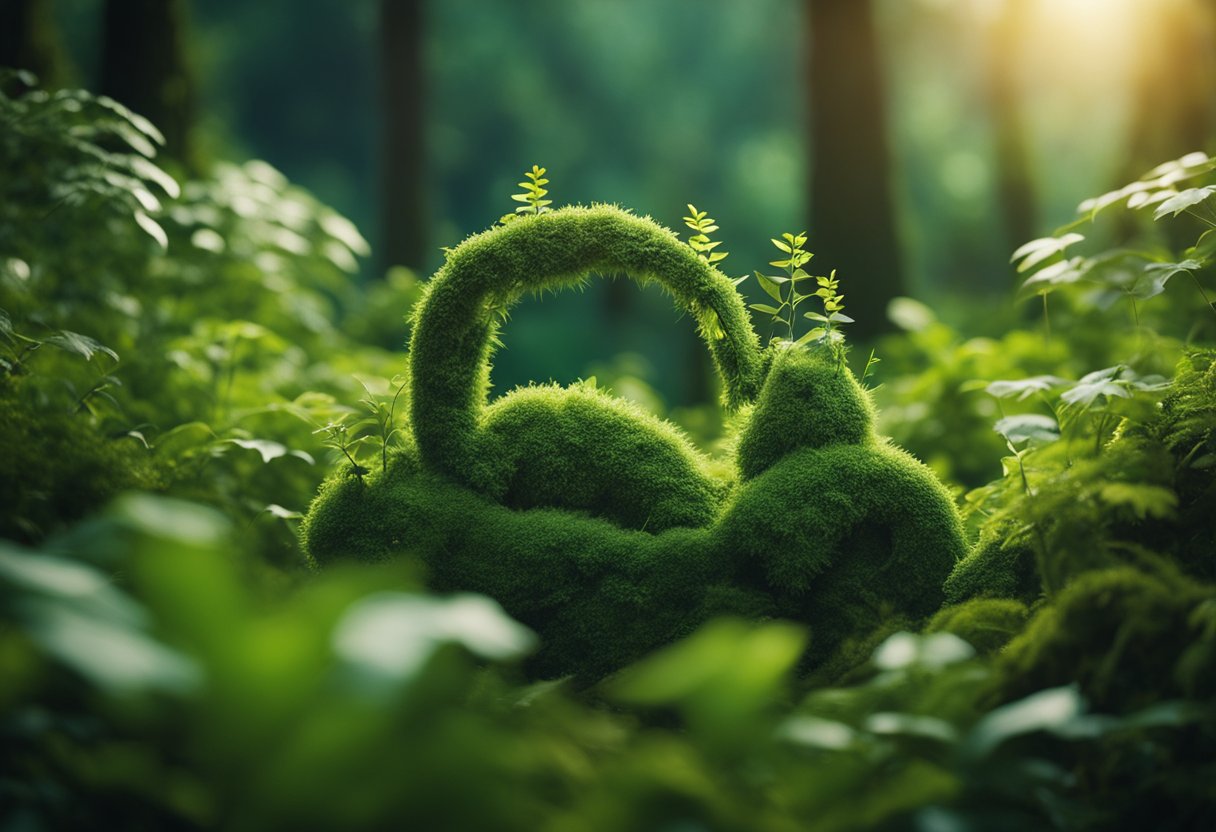
In our exploration of how Irish folklore can aid in environmental conservation, we’ve uncovered the symbolism of the hawthorn tree and its significance in cultural traditions. Known for its protective qualities, the hawthorn has been a focal point in preserving the natural environment and promoting sustainability.
Conservation policies are beginning to incorporate folklore to engage communities, recognising that these stories often reflect a profound respect for nature. By tapping into these narratives, new strategies for environmental protection are formed, bridging the gap between ancient wisdom and contemporary ecological awareness.
The Cailleach, an iconic figure in Irish mythology, symbolises the fight against exploitation of the land and presents a powerful example of how myth can inspire modern movements for ecological change. Learning from these myths, we can appreciate the environmental impact of our actions and the necessity of maintaining a harmonious relationship with the earth.
As we consider the environmental challenges before us, the lessons from Irish folklore provide inspiration and a connection to a heritage that has long celebrated the natural world. Through this lens, pursuing new solutions for conservation becomes not just a duty but an extension of age-old traditions that honour the earth.
Frequently Asked Questions

In this section, we address common inquiries about intertwining Irish folklore with environmental conservation. Our focus is to shed light on the cultural narratives that have shaped Ireland’s ecological consciousness.
What role does Irish folklore play in promoting environmental conservation?
Irish folklore has been pivotal in framing a narrative where the natural world is revered and protected. Stories woven from Ireland’s rich tapestry of myths have long illustrated the importance of preserving our landscapes and ecosystems, instilling a sense of stewardship towards nature.
How do Irish myths inspire modern attitudes towards nature and the environment?
Myths from Ireland inspire contemporary perspectives by portraying nature as a living entity worthy of respect and care. They reinforce the notion that human well-being is deeply connected to the health of our environment, prompting a more ecologically conscious mode of living.
Which Irish folklore characters are most influential in embodying green principles?
Characters like the Cailleach represent nature’s sovereignty and strength, serving as powerful symbols of environmental protection. This formidable figure, among others, embodies the tenacity required to safeguard our natural heritage.
What connections exist between traditional Irish legends and contemporary ecological practices?
Traditional Irish legends often emphasise living in harmony with nature, which parallels modern ecological practices promoting sustainability. These stories encourage us to consider the long-term impacts of our actions on the environment, echoing current green principles.
In what ways do Ireland’s mythological cycles reflect environmental values?
Ireland’s mythological cycles frequently feature themes of natural balance and respect for the Earth. They convey environmental values by illustrating the successes and failings of humans in maintaining ecological equilibrium, often highlighting the need for coexistence with nature.
How do scary Irish folklore tales contribute to appreciating the natural world?
Fear-inducing tales from Irish folklore instil awareness of nature’s power and mystery. They encourage a healthy respect for the wild, underscoring its import and the consequences of taking it for granted.


